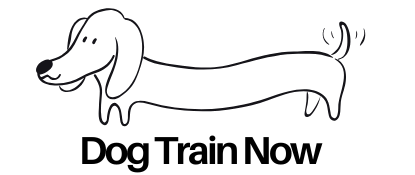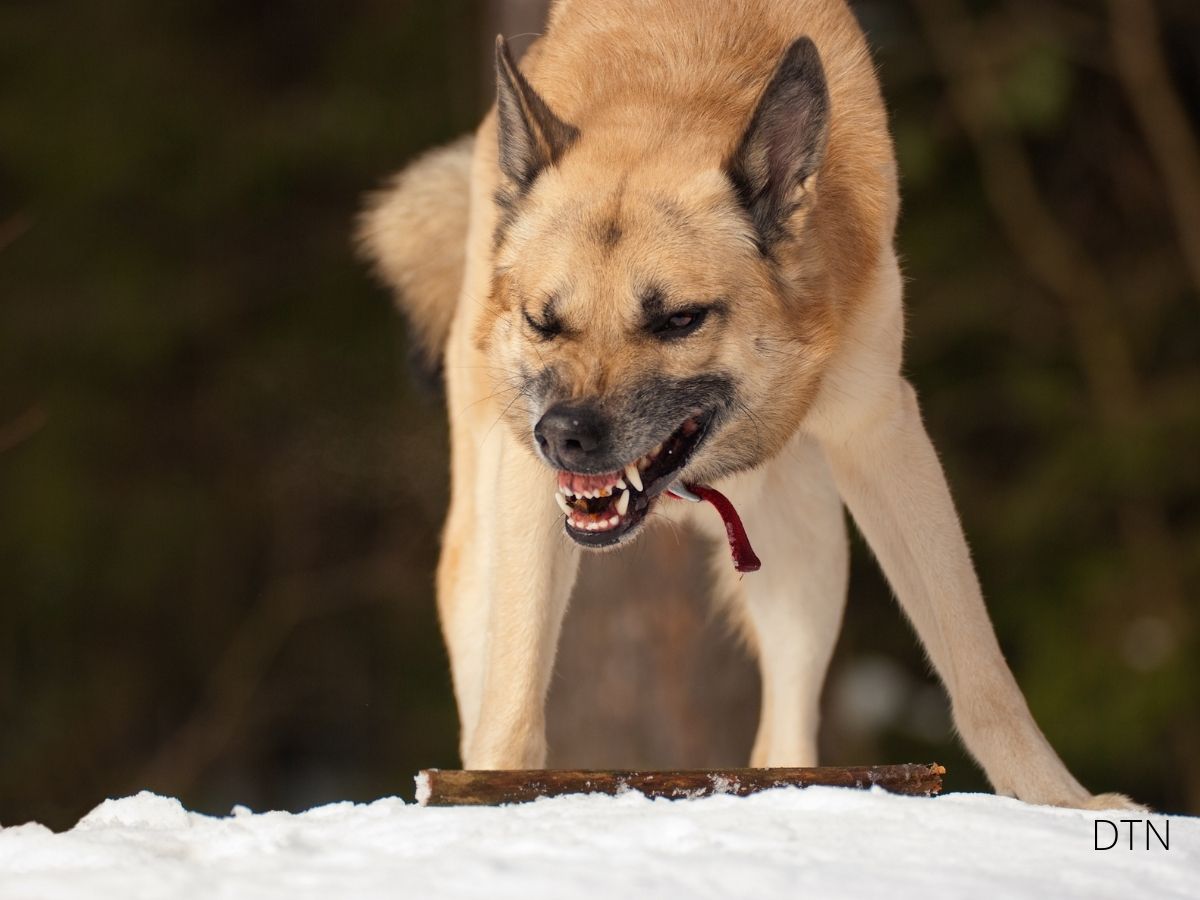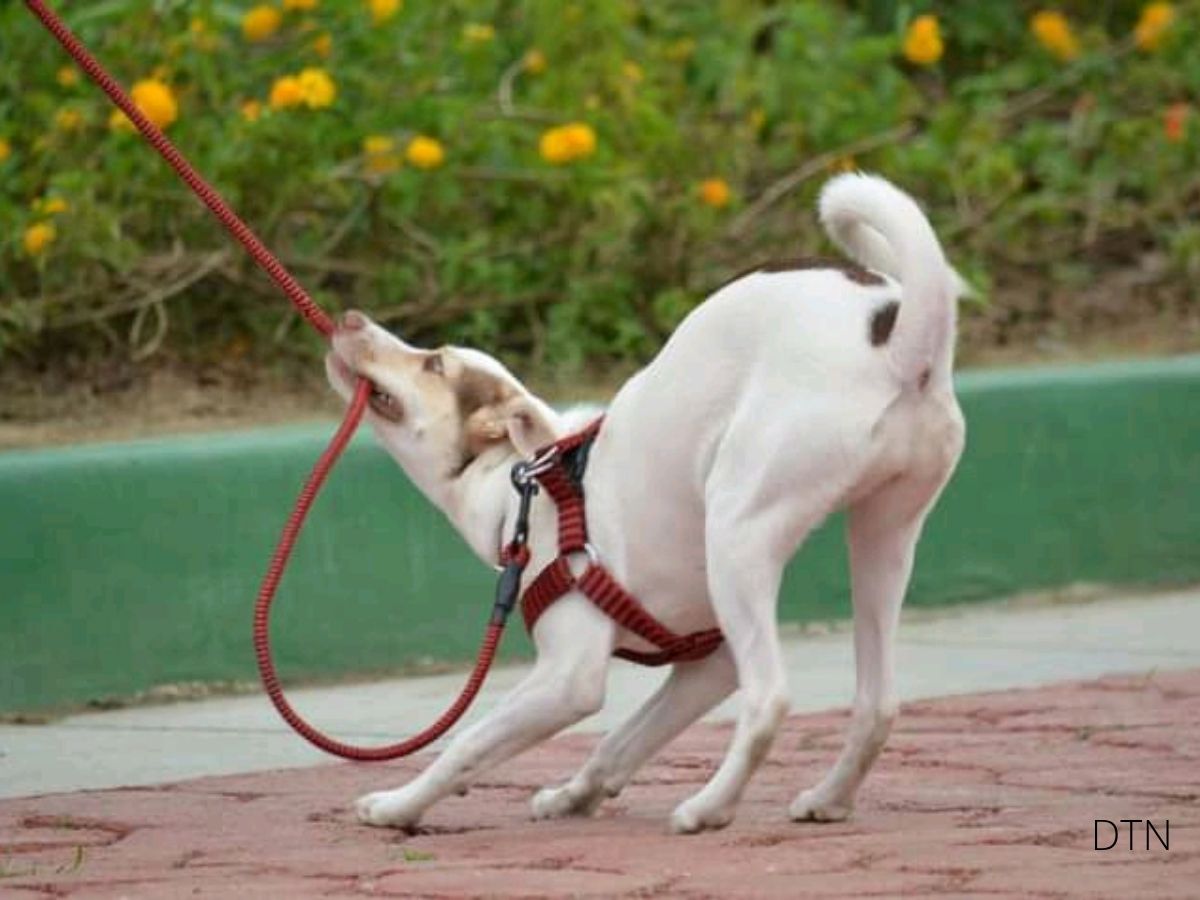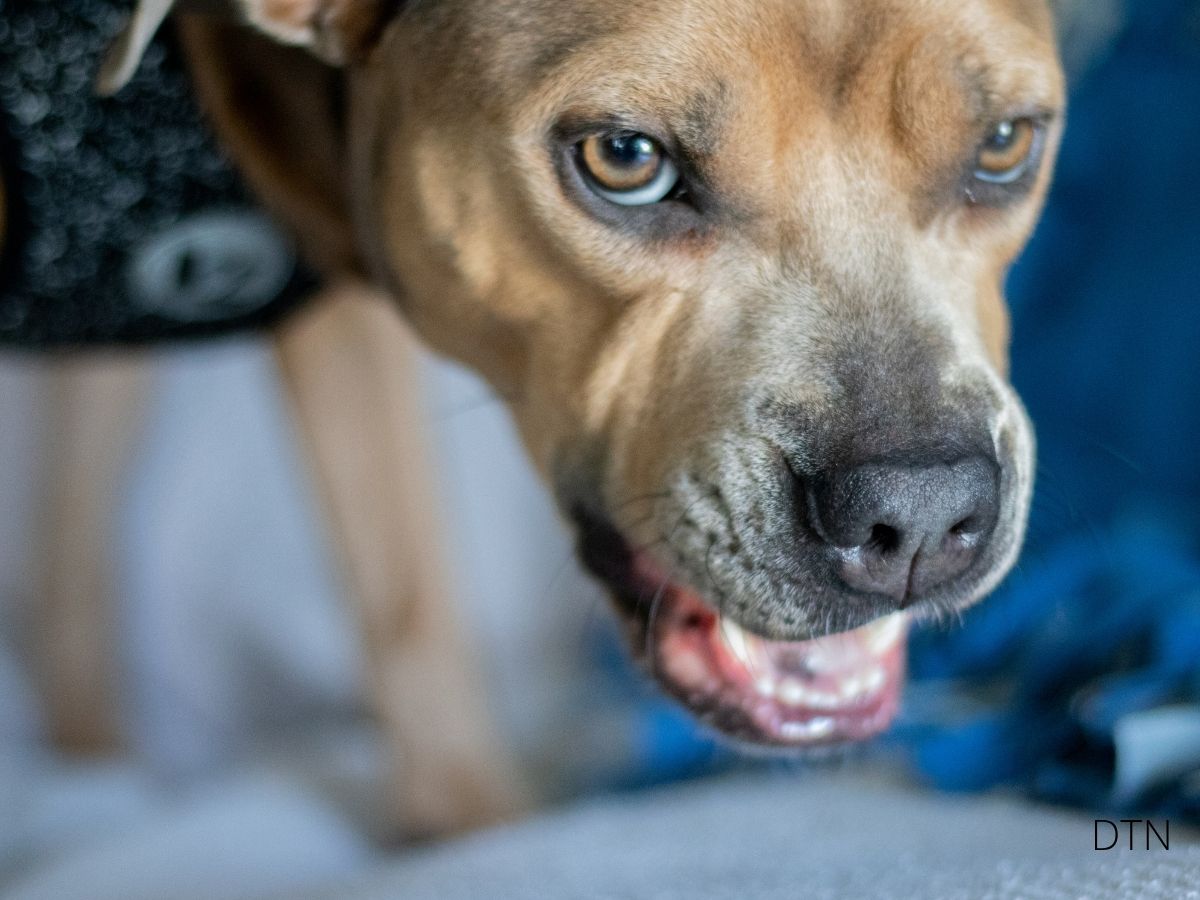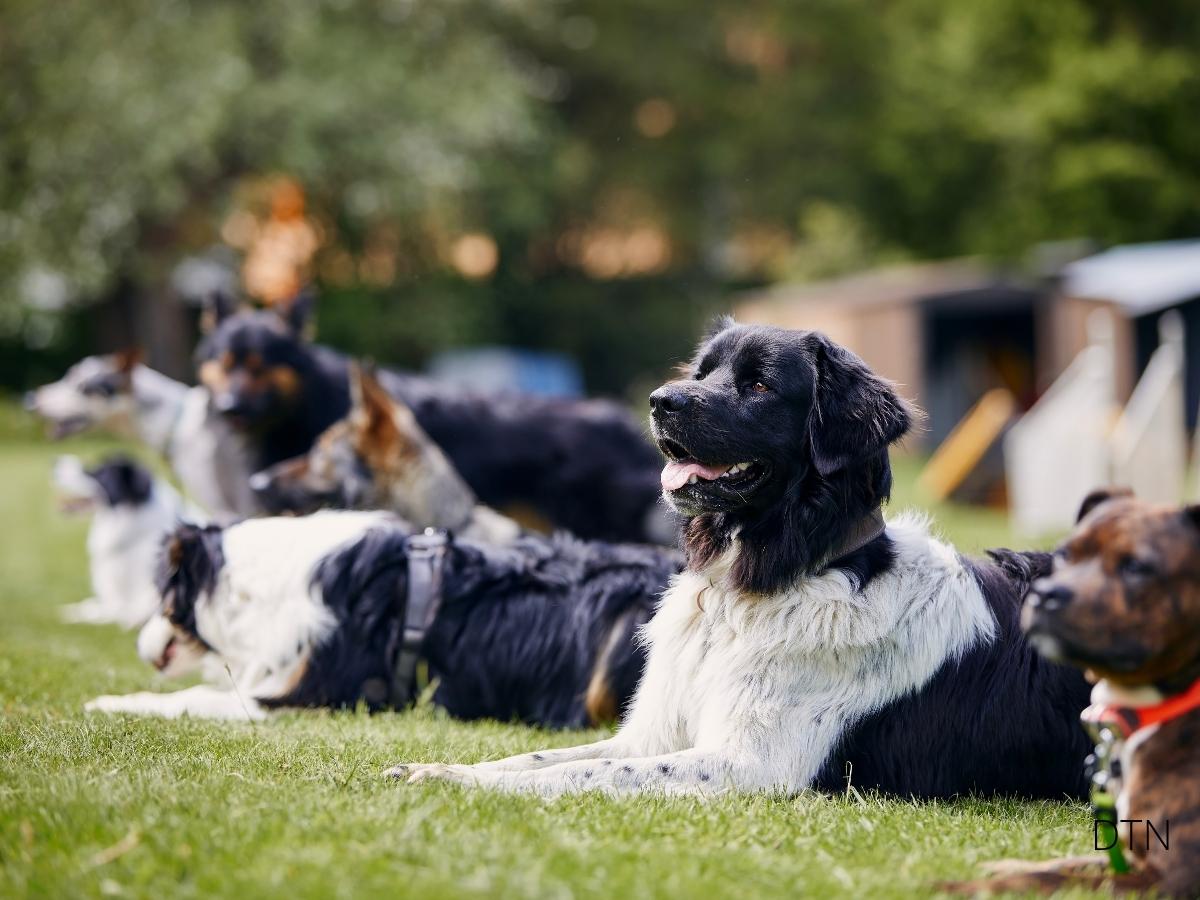Picture this: Your perfectly trained Golden Retriever sits attentively during your morning walk. Suddenly, a tennis ball bounces across the path. You watch as Buddy’s muscles tense, his body trembling with an internal earthquake. The “stay” command you’ve practiced a thousand times battles against fifty thousand years of breeding that screams “RETRIEVE!” For several seconds, he’s frozen—caught in a mental tug-of-war that’s written across every quivering muscle.
This is cognitive conflict in action: when learned behaviors collide head-on with instinctual drives. It’s not disobedience or stubbornness—it’s your dog’s brain literally arguing with itself. Understanding these internal battles transforms how we view training challenges and deepens our connection with our four-legged partners.
Inside the Conflicted Canine Brain
When cognitive conflict strikes, your dog’s brain becomes a neurological battlefield. Two powerful systems compete for control, creating genuine mental and physical distress.
The amygdala—your dog’s emotional command center—fires rapidly with instinctual responses. This ancient brain structure doesn’t care about your training goals; it cares about survival, hunting, and deeply embedded breed purposes. When triggered, it floods your dog’s system with urgent signals: “Chase!” “Protect!” “Flee!” “Grab!”
Meanwhile, the prefrontal cortex—the brain’s executive suite—tries desperately to maintain control. This more evolved region manages impulse control, decision-making, and all those behaviors you’ve carefully taught. It’s sending equally urgent signals: “Remember stay!” “Good dogs wait!” “Treat coming if you resist!”
Between these competing signals lies your dog, frozen in indecision. 🧠
The chemical cascade complicates everything further. Stress hormones like cortisol surge through your dog’s bloodstream, literally impairing their ability to think clearly. The dopamine system—crucial for reward-based learning—becomes confused when predicted outcomes (chase equals satisfaction) clash with trained expectations (stay equals treat). This neurochemical storm can last several minutes, even after the conflict appears resolved.
Physical signs reveal this internal struggle:
- Muscular tension: Particularly visible in shoulders and haunches
- Displacement behaviors: Sudden scratching, yawning, or lip licking
- Stress indicators: Panting without exertion, dilated pupils, whale eye
- Vocalization changes: Whining, whimpering, or unusual silence
- Movement patterns: Frozen posture, slow-motion movements, or frantic activity
The Usual Suspects: Common Conflict Scenarios
Understanding typical triggers helps us prepare and respond appropriately. Every dog faces unique challenges, but certain scenarios create predictable conflicts.
The Chase Dilemma
Prey drive versus recall creates perhaps the most universal conflict. Your Beagle’s nose hits an irresistible scent trail. Thousands of years of breeding scream “FOLLOW!” while your “come” command becomes a whisper in a hurricane. This isn’t defiance—it’s genetics asserting themselves with overwhelming force.
Sight hounds face visual versions of this conflict. A Whippet spotting a running rabbit experiences neurological fireworks that can override the strongest training. Terriers battle similar demons when spotting rodents, while herding breeds struggle when children run chaotically at parks.
Breed-specific intensity varies dramatically:
- Scent hounds: Can become “nose deaf” when tracking
- Sight hounds: Movement triggers instantaneous response
- Terriers: Persistent drive even after initial trigger passes
- Herding breeds: Conflicted between controlling movement and obeying stay commands
Fear Versus Compliance
When dogs perceive threats, survival instincts bulldoze through trained behaviors. A dog who performs flawlessly in calm environments might completely “forget” every command during thunderstorms. The amygdala hijacks the brain, prioritizing immediate survival over treat-earning behaviors.
Common fear-based conflicts arise from:
- Environmental triggers (storms, fireworks, construction noise)
- Social fears (strangers, other dogs, veterinary visits)
- Situational anxieties (car rides, being alone, new places)
- Sensory overwhelm (crowds, strong smells, unexpected touches)
During fear responses, asking for obedience is like expecting someone to solve math problems while fleeing a fire—the brain simply isn’t available for higher learning.
Social Excitement Overload
Friendly dogs face agonizing conflicts during greetings. Every fiber wants to jump, sniff, play, and investigate, while training demands polite sitting. Young dogs and naturally exuberant breeds like Labradors struggle intensely with this disconnect between desire and expectation.
The conflict intensifies with:
- Long-absent family members returning
- Other dogs appearing after isolation
- Children at eye level
- High-energy environments
- Inconsistent greeting rules
Resource Protection Paradox
Dogs experience profound conflict when asked to share or surrender valued resources. Evolution programmed them to guard food, territory, and precious items. When we ask them to “drop it” or allow approach during meals, we’re requesting behavior that contradicts survival programming.
This creates internal struggles around:
- Food bowls and treats
- Favorite toys or chews
- Sleeping spots
- Attention from preferred humans
- Territory boundaries
The Ripple Effect: Long-Term Impact
Unresolved cognitive conflicts don’t just create momentary frustration—they generate lasting behavioral and emotional consequences that compound over time.
The Learned Helplessness Trap
When dogs repeatedly face impossible choices between equally powerful drives, they may simply give up trying. This learned helplessness manifests as:
- Decreased training enthusiasm
- Slower responses to known cues
- Apparent “stubbornness” that’s actually emotional exhaustion
- Reluctance to offer new behaviors
- General disengagement from handler interaction
Imagine constantly trying to please someone when you genuinely cannot understand what they want. Eventually, the safest choice becomes no choice at all.
Stress Accumulation Syndrome
Each unresolved conflict adds to your dog’s overall stress burden. Like a glass slowly filling with water, eventually it overflows. Chronic conflict stress appears as:
- Increased reactivity to previously manageable triggers
- Difficulty settling or relaxing
- Digestive issues or appetite changes
- Sleep disturbances
- Weakened immune response
- Development of compulsive behaviors
The Trust Tax
Perhaps most damaging, repeated conflicts where dogs “fail” can erode the human-canine bond. Dogs lose confidence in their ability to please you, while handlers lose faith in training effectiveness. This mutual disappointment creates distance right when closeness would help most.
The better I know people, the more I like my dog.
– Mark Twain
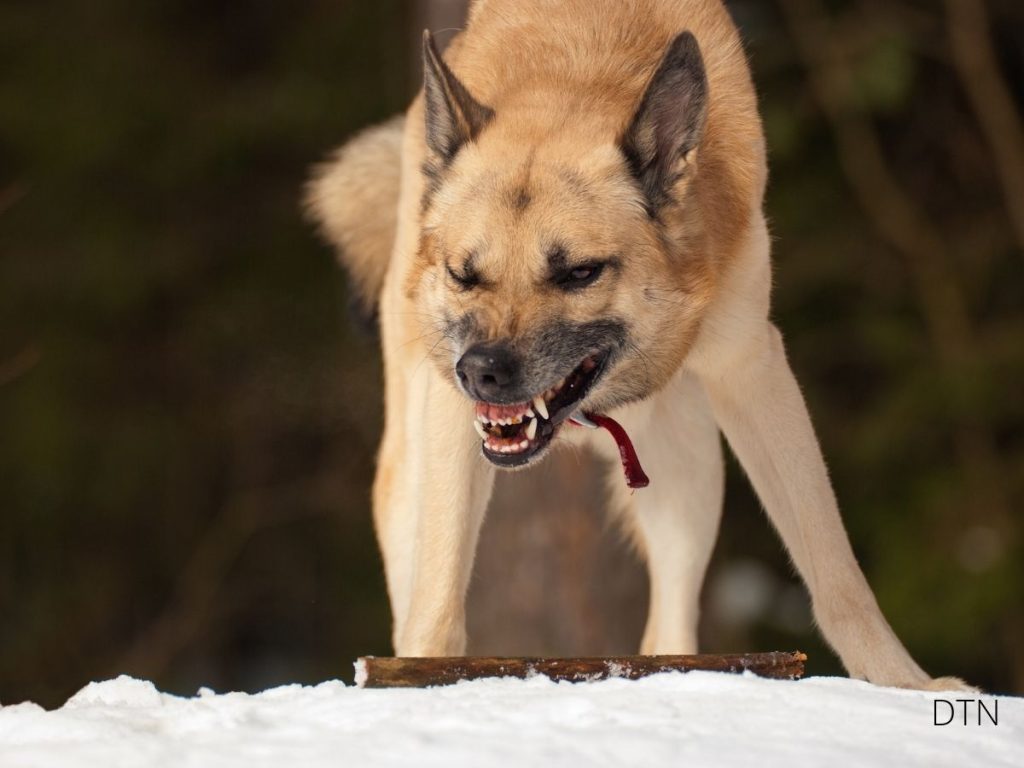
Building Better Brains: Conflict Resolution Strategies
The beautiful truth? Dogs can learn to navigate these conflicts. With thoughtful approaches, we can help them build cognitive flexibility and emotional resilience.
Foundation First: Impulse Control
Before addressing specific conflicts, build your dog’s general ability to pause and think:
“Leave It” Progression: Start with boring objects, advancing to increasingly tempting items. The goal isn’t perfection but teaching your dog that resistance is possible and profitable. Practice in various locations with different distractions, always ensuring success before increasing difficulty.
Duration Development: Extend time between command and reward gradually. Begin with one second, building to minutes. This teaches dogs that immediate gratification isn’t necessary—a crucial skill for conflict resolution.
Choice Training: Offer simple choices throughout daily life. Which toy? Which direction to walk? Which treat? This builds decision-making muscles in low-stakes situations, preparing for higher-conflict moments.
Emotional Reconditioning
Since conflicts involve emotional responses, we must address feelings alongside behaviors:
Systematic Desensitization: Expose dogs to triggers at sub-threshold levels—distances or intensities where they notice but don’t react. Pair trigger appearance with wonderful outcomes, gradually decreasing distance as comfort grows. A dog reactive to bicycles might start watching from 100 feet while eating chicken, eventually progressing to bikes passing nearby.
Counterconditioning Protocols: Change emotional associations from negative to positive. The sight of another dog transforms from “threat” to “cheese happens!” This emotional shift must occur before behavioral compliance becomes possible.
Confidence Building: General confidence helps dogs navigate specific conflicts. Novel object exploration, parkour basics, trick training, and scent work all build brave, thinking dogs who face challenges with curiosity rather than fear.
Environmental Engineering
Smart management prevents conflicts while building skills:
Strategic Setup:
- Use distance as your friend
- Employ visual barriers when needed
- Choose training times wisely
- Control trigger exposure initially
- Always have exit strategies
Gradual Challenge Building:
- Perfect behaviors in boring environments
- Add one mild distraction
- Increase slowly based on success
- Practice in multiple contexts
- Real-world application with support
The Human Half: Your Role in Resolution
Your emotional state, body language, and responses profoundly impact your dog’s conflict resolution abilities.
The Mirror Effect
Dogs constantly scan human emotions, mirroring our internal states. When you anticipate problems, your body telegraphs tension through:
- Tightened leash grip
- Held breath
- Stiffened posture
- Elevated voice pitch
- Quickened movements
Your dog reads these signs as confirmation that danger lurks, intensifying their conflict. Conversely, genuine calm confidence helps dogs access trained behaviors despite internal struggle.
Developing Handler Zen
Practice these skills to support your dog:
Breath Awareness: Notice your breathing during training. Deep, regular breaths signal safety.
Body Scanning: Regularly check and release muscle tension, especially in shoulders and hands.
Positive Visualization: Picture successful outcomes rather than anticipating failure.
Emotional Regulation: Acknowledge frustration without expressing it through your body.
Celebration Mindset: Find small victories in every session.
When Professional Help Makes Sense
Some conflicts require expert guidance. Consider professional support when:
- Conflicts escalate to aggression
- Anxiety becomes extreme or generalized
- No progress appears after 6-8 weeks of consistent work
- Safety concerns arise for humans or dogs
- Your confidence erodes significantly
- Multiple behavioral issues compound
Certified behavior consultants and veterinary behaviorists offer different expertise. Both use science-based approaches, but veterinary behaviorists can prescribe medication when brain chemistry needs support alongside training.
Real Success Stories: What’s Possible
Case 1: Border Collie Bella Bella froze when seeing joggers, torn between herding instinct and heel commands. Through systematic desensitization, impulse control games, and providing appropriate herding outlets (treibball), she learned to watch runners pass with just alertness, no chasing. Success took four months of consistent work.
Case 2: Rescue Beagle Max Max’s food conflicts stemmed from early starvation. He couldn’t “wait” near food without panic. Using choice-based protocols, environmental management, and patience, Max learned food would always come. Two years later, he can sit calmly while meals prepare—though we still respect his need for space while eating.
Case 3: German Shepherd Duke Duke’s protection instincts conflicted with social expectations. Rather than suppressing his nature, we taught discrimination—when to guard versus when to relax. Clear on/off-duty signals, controlled socialization, and respecting his working heritage created a dog who could navigate both roles successfully.
The Long View: Lifetime Management
Some conflicts resolve completely; others require ongoing management. This isn’t failure—it’s realistic partnership. A sight hound may never ignore running rabbits entirely. A guardian breed might always notice strangers. Success means:
- Reduced stress during challenging moments
- Faster recovery from conflicts
- Increased handler confidence
- Mutual trust during difficulties
- Joy despite imperfection
Your dog’s cognitive conflicts deserve understanding, not judgment. When we recognize the genuine neurological struggle behind “disobedience,” we respond with empathy rather than frustration. This shift—from demanding compliance to supporting success—transforms both training outcomes and relationship quality.
Moving Forward Together
Every dog faces internal battles between ancient instincts and modern expectations. Some struggle intensely due to genetics or past trauma. Others navigate conflicts with relative ease. Regardless of your dog’s challenges, approaching them with knowledge and compassion builds unshakeable bonds.
The path forward isn’t about eliminating instincts or achieving robotic obedience. It’s about helping our dogs develop tools to make choices that work for everyone. Some days will shine with success. Others will remind you that progress isn’t linear. Both are part of the journey.
Your frozen dog, trembling between stay and chase, isn’t defying you. They’re honoring both their nature and their bond with you, caught in a moment of impossible choice. By understanding these conflicts, adjusting our approaches, and providing patient support, we become true partners in navigating life’s challenges.
The deepest relationships aren’t built on perfection. They’re forged in moments of struggle met with understanding, in frozen conflicts resolved with compassion, in the daily choice to honor both the wolf and the companion within our beloved dogs. 🐾Retry
